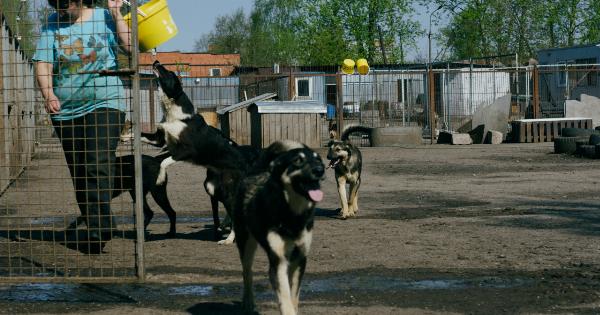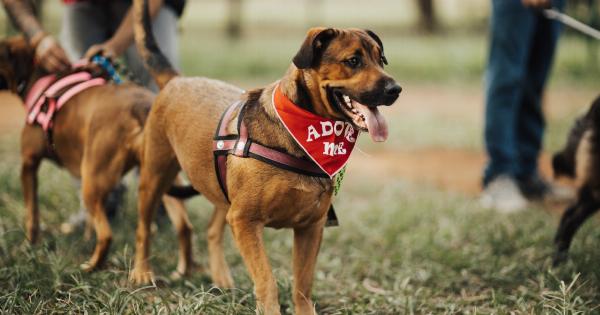Having a dog as a pet can bring immense joy and companionship. However, it is essential for dog owners to be aware of the potential risks associated with their canine companions, particularly when it comes to biting.
Dogs, regardless of their breed or size, have the potential to bite, and it is crucial for owners to take steps to manage this risk appropriately. This article aims to provide valuable insights and practical tips on effectively managing your dog’s bite risk.
The Importance of Bite Prevention
Preventing dog bites is crucial for several reasons. Firstly, bites can cause physical harm, ranging from minor scratches and bruises to more severe injuries that may require medical attention.
Secondly, dog bites can result in emotional trauma for both the victim and the owner, often leading to legal consequences and financial liabilities. Moreover, bites can strain relationships between dog owners and their communities, potentially resulting in the need to rehome or euthanize the dog. To safeguard your dog and others, proactively managing the risk of biting is of utmost importance.
Understanding Canine Behavior
To effectively manage your dog’s bite risk, it is necessary to understand canine behavior and potential triggers for aggression. Dogs may bite due to fear, resource guarding, pain, predatory instincts, territoriality, or when feeling threatened.
Recognizing signs of stress, discomfort, or aggression in your dog, such as growling, bared teeth, raised fur, or a stiff body posture, is crucial in preventing bites. By understanding your dog’s body language, you can intervene before a bite occurs.
Socialization and Training
Socialization plays a vital role in reducing the likelihood of aggressive behavior and bites. Properly socializing your dog from an early age helps them feel more comfortable and confident in various situations.
Expose your dog to different environments, people of all ages, other animals, and different experiences to ensure they become well-adjusted and less likely to bite. Attending obedience classes or hiring a professional trainer can also greatly assist in teaching your dog appropriate behaviors and effective communication.
Supervision and Safe Environments
It is crucial to supervise your dog whenever they are in the presence of unfamiliar individuals, especially children or individuals who may not be comfortable around dogs.
Additionally, it is essential to create a safe environment for your dog and others by securely fencing your yard and using baby gates or crates indoors to prevent potential interactions that may escalate into biting incidents. Managing your dog’s access to potentially stressful or overwhelming situations is key to minimizing bite risks.
Recognizing Triggers and Avoidance
Each dog may have specific triggers that can lead to aggression and biting. It is crucial to identify and recognize these triggers to avoid potential incidents.
Common triggers include sudden movements, loud noises, unfamiliar people or animals, and situations that make the dog uncomfortable or fearful. By avoiding or minimizing exposure to known triggers, you can significantly reduce the risk of your dog biting.
Proper Handling and Restraint Techniques
When handling your dog, it is important to utilize proper techniques to minimize the risk of bites. Avoid reaching directly over your dog’s head or face, which can be perceived as intimidating.
Instead, approach them from the side and avoid quick, jerky movements. When necessary, use a leash, harness, or muzzle as appropriate to safely control your dog during situations where biting may be a concern, such as visits to the veterinarian or groomer.
Children and Dogs
Children are particularly vulnerable to dog bites due to their size, lack of understanding about a dog’s behavior, and unpredictable movements. Educating children about appropriate interactions with dogs is essential to reduce bite risks.
Teach children to always ask for permission before approaching a dog, avoid disturbing dogs while they are eating or sleeping, and never pull on their ears or tail. Constant adult supervision is crucial when children and dogs are together to ensure the safety of both.
Recognizing Stress and Seeking Professional Help
If you observe signs of excessive stress, anxiety, or aggression in your dog, it is imperative to seek professional help from a veterinarian or a qualified dog behaviorist.
These professionals can evaluate and address any underlying medical issues or behavioral problems that may contribute to the risk of biting. Early intervention and appropriate guidance can greatly reduce the likelihood of future incidents.
Legal Responsibilities and Liability
As a dog owner, it is important to be aware of your legal responsibilities and potential liabilities related to dog bites.
Laws regarding dog bites vary by jurisdiction, but many impose strict liability on dog owners, holding them responsible regardless of whether the owner had knowledge of the dog’s aggressive tendencies. It is crucial to comply with local laws, maintain proper insurance coverage, and take necessary precautions to prevent your dog from causing harm to others.
Continual Education and Awareness
Finally, educating yourself about dog behavior, responsible ownership, and bite prevention is an ongoing process.
Stay informed about the latest research, attend seminars or workshops, and actively participate in local or online communities dedicated to responsible dog ownership. By continually educating yourself about managing your dog’s bite risk, you can create a safe and harmonious environment for both your dog and those around you.





























